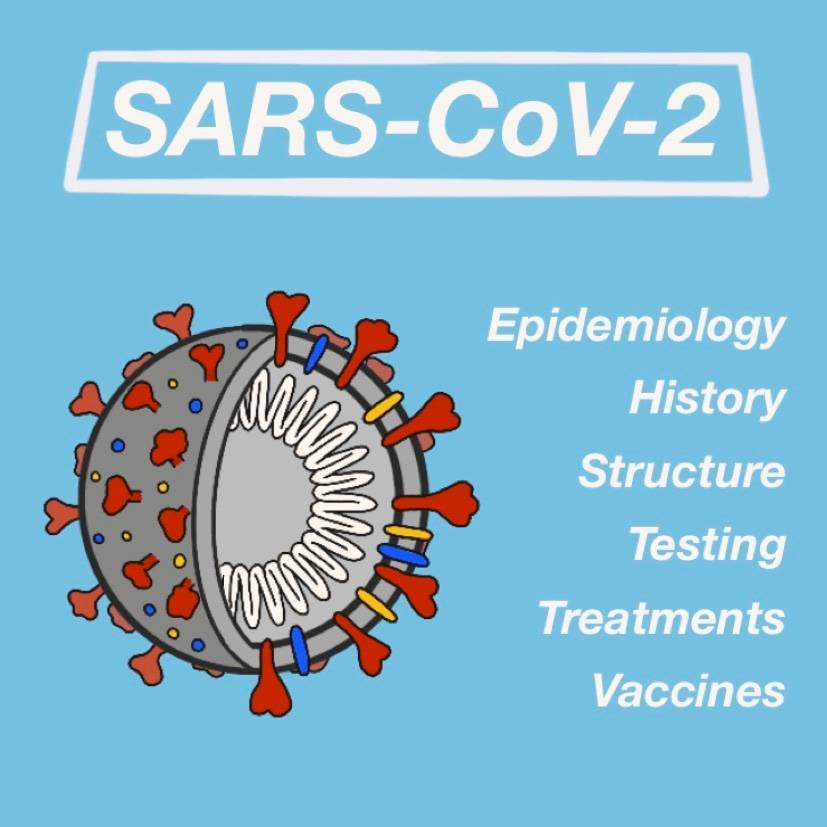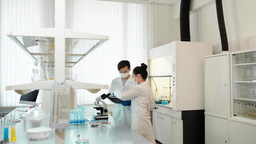A Guide to COVID-19: a global pandemic caused by the novel coronavirus SARS-CoV-2

SARS-CoV-2, Covid, COVID-19 and novel coronavirus are all terms used to describe the virus (SARS-CoV2: Severe Acute Respiratory Syndrome-CoronaVirus), the viral species (Coronavirus) or the pandemic phenomenon (COVID-19: Coronavirus disease-2019). This pandemic has already claimed hundreds of thousands of lives, threatens to claim many more and imposes a global financial toll with every passing day. To better appreciate efforts currently undertaken to tackle the virus spread, this State-of-the-Art review by Atzrodt et al [1] summarises a collection of recent articles and aims to serve as a first point of contact information source. Being informed on the current status of the coronavirus outbreak will help prevent future spread of the virus.
Coronavirus: an old foe returning
Despite this particular coronavirus making it to the news, the family of coronaviruses is not a new discovery. According to Atzrodt et al, other members of the coronavirus family had been identified in 2002 and 2012. Whilst these were also capable of infecting humans, they could not spread as easily and hence were not as infectious as SARS-CoV-2. One way to assess how infectious a virus can be, is via the R0 value, a number indicating how many people can potentially be infected from a single infected person. Although symptoms of SARS-CoV2 will tend to be similar in most infected people (fever and cough), authors report that some people might experience a heavier (e.g. pneumonia) or lighter form of the infection (shortness of breath), whereas others might not show any symptoms of infection at all.
Emerging approaches for diagnosis and treatment
To confirm whether the virus has successfully infiltrated the human body, a series of screening tests have been and are continuously being developed (briefly summarised in the table below and more in-depth in the review article).
Table 1. Array of tests available for SARS-CoV2 diagnosis or detection of mounting immune response to infection. Genetic material is required from individuals to perform all of these tests (e.g. from a swab).
| Test technique | Detection target | Turnaround time | Available from | Notes |
| Polymerase Chain Reaction (PCR)-based | Viral RNA molecules | Minutes to Hours | Research labs, Abbott, Bosch Healthcare Solutions, Vivalytic VRI | Diagnosis only; contamination can give false +ve/-ve |
| Lateral Flow Immunoassay or Enzyme-Linked Immunosorbent Assay (ELISA)-based | Antibodies against virus | Hours | Roche diagnostics, Abbott | Not for diagnosis; duration of infection |
| CRISPR-based | Viral RNA molecules | Minutes | Sherlock Biosciences | Diagnosis only; not approved yet |
Unfortunately, the only medicines available to patients infected with SARS-CoV2 at present are for symptom relief as there is no cure. Whilst there are currently several drugs in the preclinical development stage, waiting to be granted approval for human use, there are other potential treatments that seem promising. Atzrodt et al carefully review the scientific literature with regards to how these might work and they critically examine what promise they might hold within the article. Briefly, therapeutic agents discussed include:
- Remdesivir
- Favipiravir
- Hydroxychloroquine/Chloroquine
- Lopinavir/Ritonavir
- Interferon beta-1a
- EIDD-2801
- CRISPR-based treatments
- Antibody-based treatments
- In-depth analysis of vaccine development/updates/progress
Underlined are treatments granted FDA-approval meaning they can start being tested in humans.
In Bold are treatments that have passed human trials and are available to use globally.
In italics are treatments granted FDA-approval but side effects are monitored.
Concluding remarks
Collectively, the authors further our understanding of why this novel coronavirus (SARS-CoV2) could spread faster than other members of the coronavirus family as well as provide insights as to why strict isolation measures are required. Mechanistic links between viral structure and transmission are outlined as well as epidemiological facts regarding coronaviruses are consolidated. Authors shed light on the continuously evolving landscape of diagnostic test development and discuss challenges with upcoming therapeutic approaches, including vaccines. Finally, this article offers a starting point for other scientists to get involved with Covid-19 research.
The State-of-the-Art article can now be read in full in The FEBS Journal: https://febs.onlinelibrary.wiley.com/doi/abs/10.1111/febs.15375
Top image of post by Atzrodt et al.
References
- Atzrodt, C. L., Maknojia, I., McCarthy, R. D. P., Oldfield, T. M., Po, J., Ta, K. T. L., Stepp, H. E. & Clements, T. P. (2020) A Guide to COVID-19: a global pandemic caused by the novel coronavirus SARS-CoV-2, The FEBS Journal. n/a.





Join the FEBS Network today
Joining the FEBS Network’s molecular life sciences community enables you to access special content on the site, present your profile, 'follow' contributors, 'comment' on and 'like' content, post your own content, and set up a tailored email digest for updates.